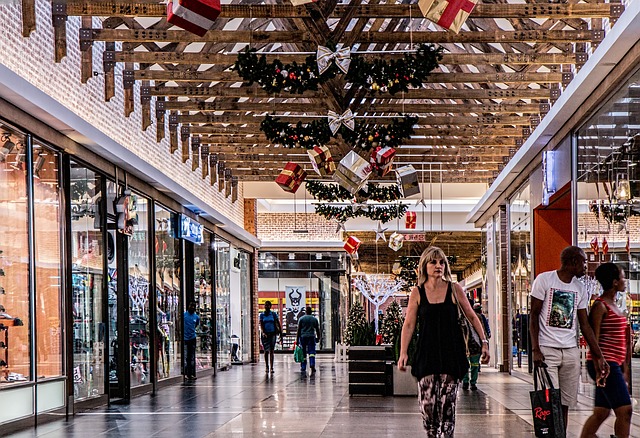Retailers are anticipating a positive holiday shopping turnout this year. According to Deloitte’s 2017 Holiday forecast, consumer spending will likely lead to a healthy 4% to 4.5% increase in (in-store) retail sales between November and January, for a total haul of more than $1 trillion.
While digital sales are forecasted to rise upwards of 21% to as much as $114 billion for the season, in-store sales still account for 8-9 times that of e-commerce. That figure alone puts an impetus on retailers to create a standout brick and mortar experience — while simultaneously managing their customer journey and purchase considerations online. In order to create the most meaningful and uncomplicated shopping experience, retailers must strategically focus efforts on integrating online and offline shopping experiences to help customers conquer their holiday gift lists more seamlessly.
Here are four ways retailers should consider creating more meaningful experiences for shoppers this holiday season:
Provide a seamless mobile-search experience
Consumers expect retailers to provide a seamless mobile search experience. More than ever, today’s consumers will be researching holiday gifts and making purchases through a combination of channels and platforms, and mobile sits in the driver’s seat as a force behind purchase decisions. In fact, according to Think with Google, 82% of smartphone users say they consult their phones on purchases before buying in-store.
Shoppers can easily access pertinent information online, including product specifications, location, store hours and — most importantly — the best deals. It’s essential for retailers to make use of online and social media cues to deepen engagement with shoppers throughout their purchase journey, as well as their in-store purchases.
Burberry is a retailer leading the charge in this space. Shoppers can browse and select products online and then go into the store within less than 24 hours to receive personalized customer service and try on those selected items. Coined as their “collect-in-store service,” this allows consumers to leisurely view products in their free time, while still getting the pay-off of ensuring the right fit. Not only that, but the brand has also equipped sales staff with digital tools to enhance the customer experience and to provide personalized service. They have a “Customer 1-2-1” tool that enables sales associates to look at a customer’s in-store and online transaction history so that reps can better serve their customers.
Extend the shopping season… and the deals
Shoppers are rethinking the traditional holiday shopping time frame. According to recent research from Mintel, consumers still enjoy shopping in stores on Black Friday; however, more consumers prefer shopping on Cyber Monday. In 2016, the Saturday before Christmas, “Super Saturday” finally overtook Black Friday and Cyber Monday as the biggest retail shopping day of the season.
Toys “R” Us, for example, despite its bankruptcy news, is capitalizing on this trend this holiday season. It recently shared a holiday guide, “The Ultimate Guide to Play,” featuring Black Friday deals valid through late November.
With fewer than 20% of consumers identifying as last-minute shoppers, there’s an appetite to fulfill holiday shopping needs outside the traditional timeframe and offering deals early and often to keep brands top of mind. As such, retail brands will likely extend deals into the New Year as well, seeking to reach those customers who love to score deals at all times of the year.
Use brick-and-mortar to tell the brand story
The accessibility to technology, data and emerging platforms assist retailers in anticipating the types of experiences and engagements that consumers demand. They should lean on that knowledge to determine the connections customers will appreciate in stores.
The more expensive a product is, the more research customers will conduct before committing to it. Using dwell time to their advantage, retailers are also using brick-and-mortar stores to tell their brand story and share relevant background that sparks a conversation. Some also consider a tie to philanthropic efforts, as retailers that emphasized philanthropic efforts in their marketing communications performed better on the likability spectrum, according to research by Ace Metrix.
A brand that has nailed telling their brick and mortar brand story is Anthropologie. The overall detail and craft that goes into creating their in-store experience goes beyond selling and promotions. Their target audience is a sophisticated and contemporary woman in her late 20’s to early 40’s and they’ve been successful in building a brand that feels approachable and “homey” for that demographic within their retail stores.
Anthropologie’s Corporate Creative Director Missy Peltz once explained to Racked that the brand aims for an “eclectic, rustic, modern” feel and focuses on the physical details of the store to immerse shoppers in a fantasy experience. That includes lighting incense to create sensory experiences and spending upwards of $5,000 to create extravagant window displays. Anthropologie stores also feature discount nooks to make shopping simpler and more pleasant.
Leverage purchase guides
Purchase guides and gift recommendations will remain prevalent this year, as over half of holiday shoppers relied on a retailer’s recommendations when making their lists in 2016, according to the National Retail Federation. Also according to the NRF, younger consumers are more likely to make impulse purchases, finding that 66% of millennials and 71% of Gen Z said they made more impulsive purchases this year than the year before.
Finding the right gift often outranks price when it comes to holiday shopping. Holiday shoppers have a desire to purchase meaningful and personalized products from brands with a clear story and one-to-one customer service, which is why the in-store experience is so important.
The key to striking the right balance when it comes to connecting with consumers is properly integrating technology to enhance shoppers’ in-store experience. Evidence denotes that shoppers expect the transition between online and physical locations to be seamless, and they demand a connected experience, regardless of which point of service they choose for browsing and buying.
Nicole Turner is senior vice president and group client services director of Sandbox Agency.
